Stemcell Crab Nebula Tee
Stemcell Crab Nebula Tee
5.0 / 5.0
(1) 1 total reviews
Show some local pride next time you're at an intergalactic event by represent one of the most interesting astronomical landmarks in our local group. The Crab Nebula and the rays emitted from its pulsar, have been instrumental in discovering important details about our solar system.
Text reads:
The Crab Nebula (catalogue designations M1, NGO 1952, Taurus A) is a supernova remnant in the constellation of Taurus. The common name comes from William Parsons, 3rd Earl of Rosse, who observed the object in 1840 using a 36-inch telescope and produced a drawing that looked somewhat like a crab. Corresponding to a bright supernova recorded by Chinese astronomers in 1054, the nebula was discovered earlier by English astronomer John Bevis in 1731. The nebula was the first astronomical object identified corresponding to a historical supernova explosion.
At an apparent magnitude of 8.4, comparable to that of Saturn's moon Titan, it is not visible to the naked eye but can be made out using binoculars under favorable conditions. The nebula lies in the Perseus Arm of the Milky Way galaxy, at a distance of about 2.0 kilo-parsecs (6500 ly) from Earth. It has a diameter of 3.4 parsecs (11 ly) corresponding to an apparent diameter of some 7 arc-minutes, and is expanding at a rate of about 1,500 kilometres per second (930 mi/s), or 0.5% of the speed of light.
At the center of the nebula lies the Crab Pulsar, a neutron star 28-30 kilometres (17-19 mi) across with a spin rate of 30.2 times per second, which emits pulses of radiation from gamma rays to radio waves. At X-ray and gamma ray energies above 30 KeV, the Crab Nebula is generally the brightest persistent gamma-ray source in the sky, with measured flux extending to above 10 TeV. The nebula's radiation allows detailed study of celestial bodies that occult it. In the 1950's and 1960's, the Sun's corona was mapped from observations of the Crab Nebula's radio waves passing through it, and in 2003, the thickness of the atmosphere of Saturn's moon, Titan, was measured as it blocked out X-rays from the nebula.
Made in ethical WRAP-certified facilities and handprinted in Tulsa, OK. Support science without supporting sweatshops.
Matter Subscriber Price:
Couldn't load pickup availability
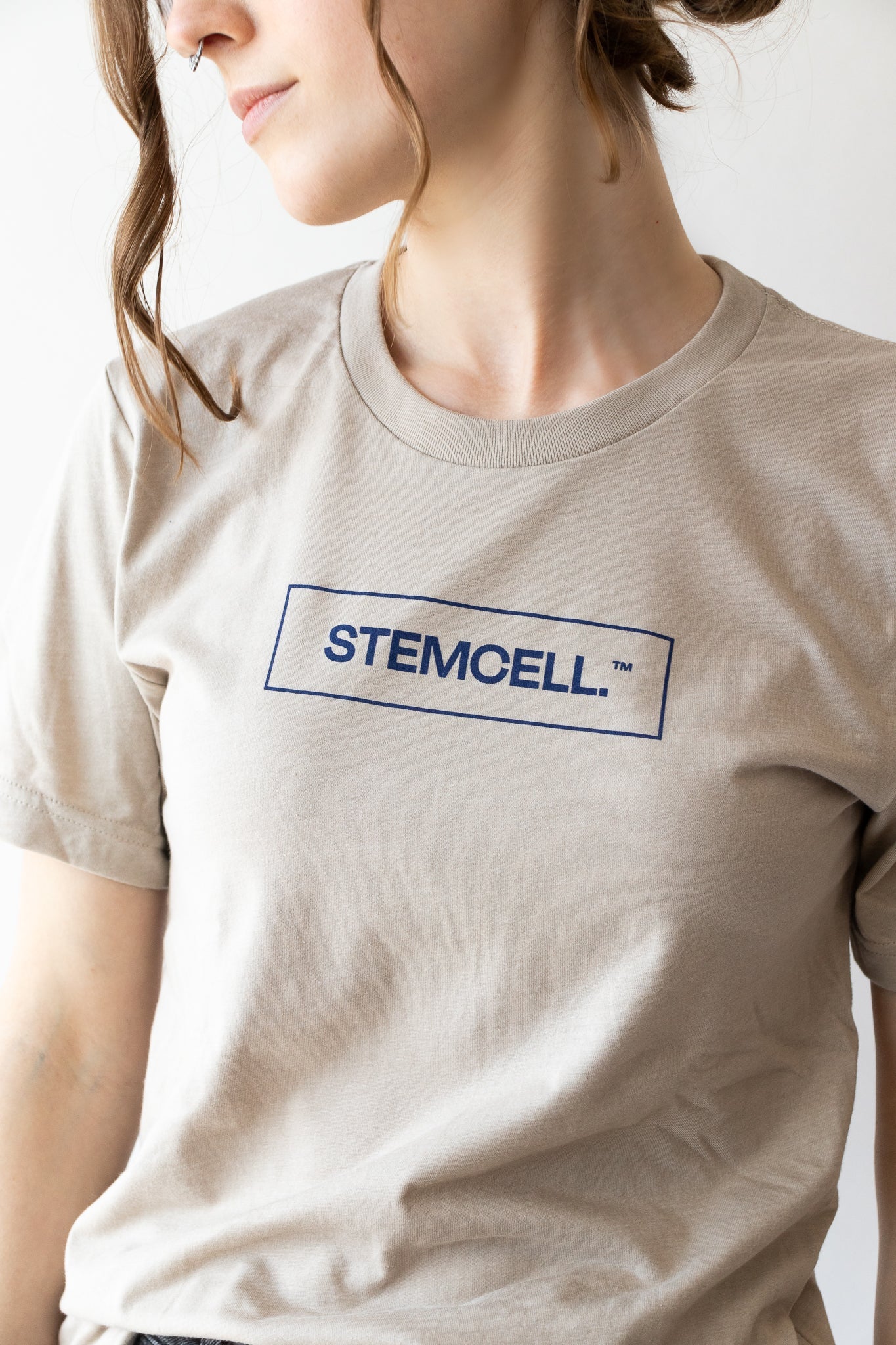
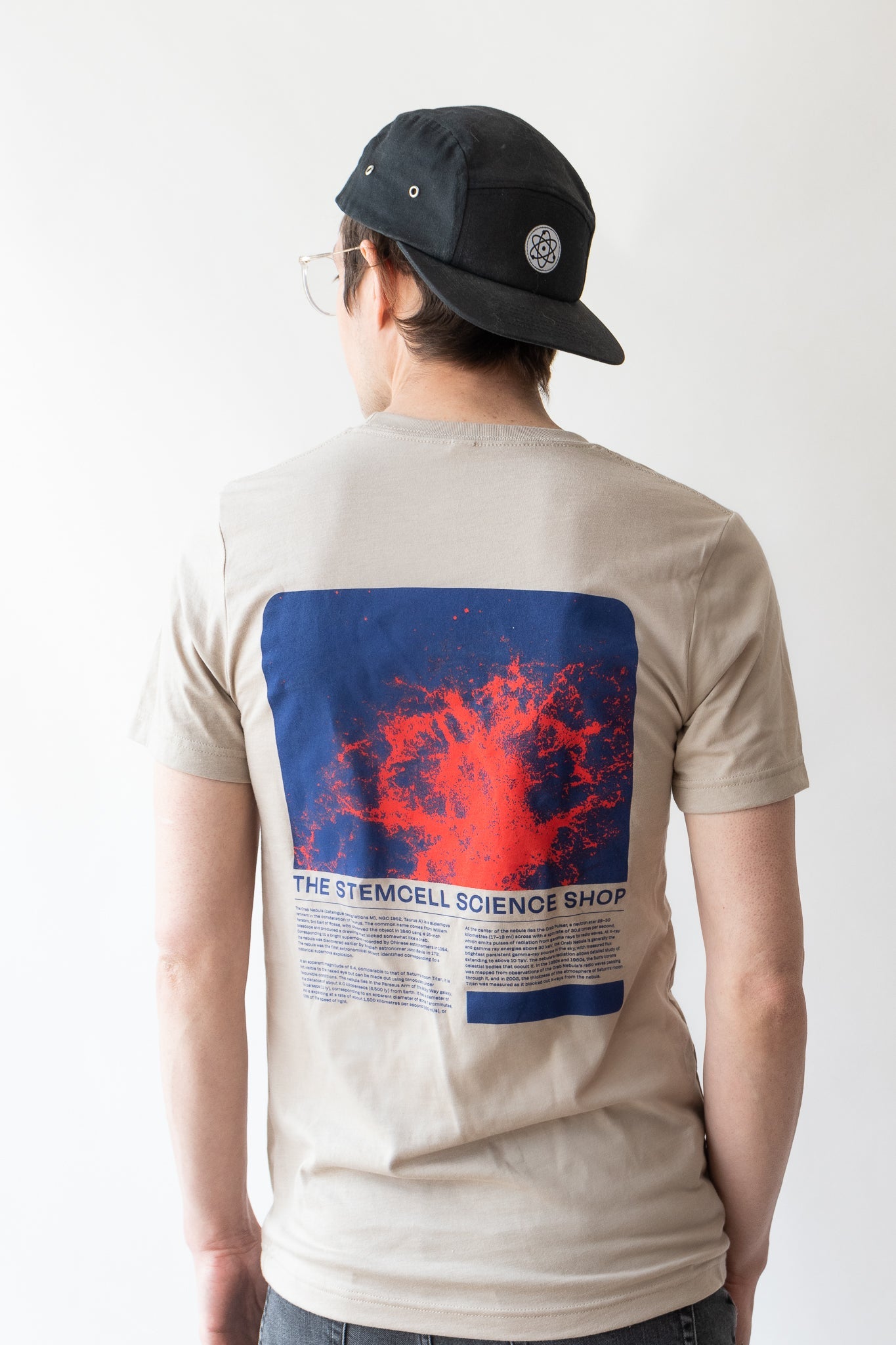

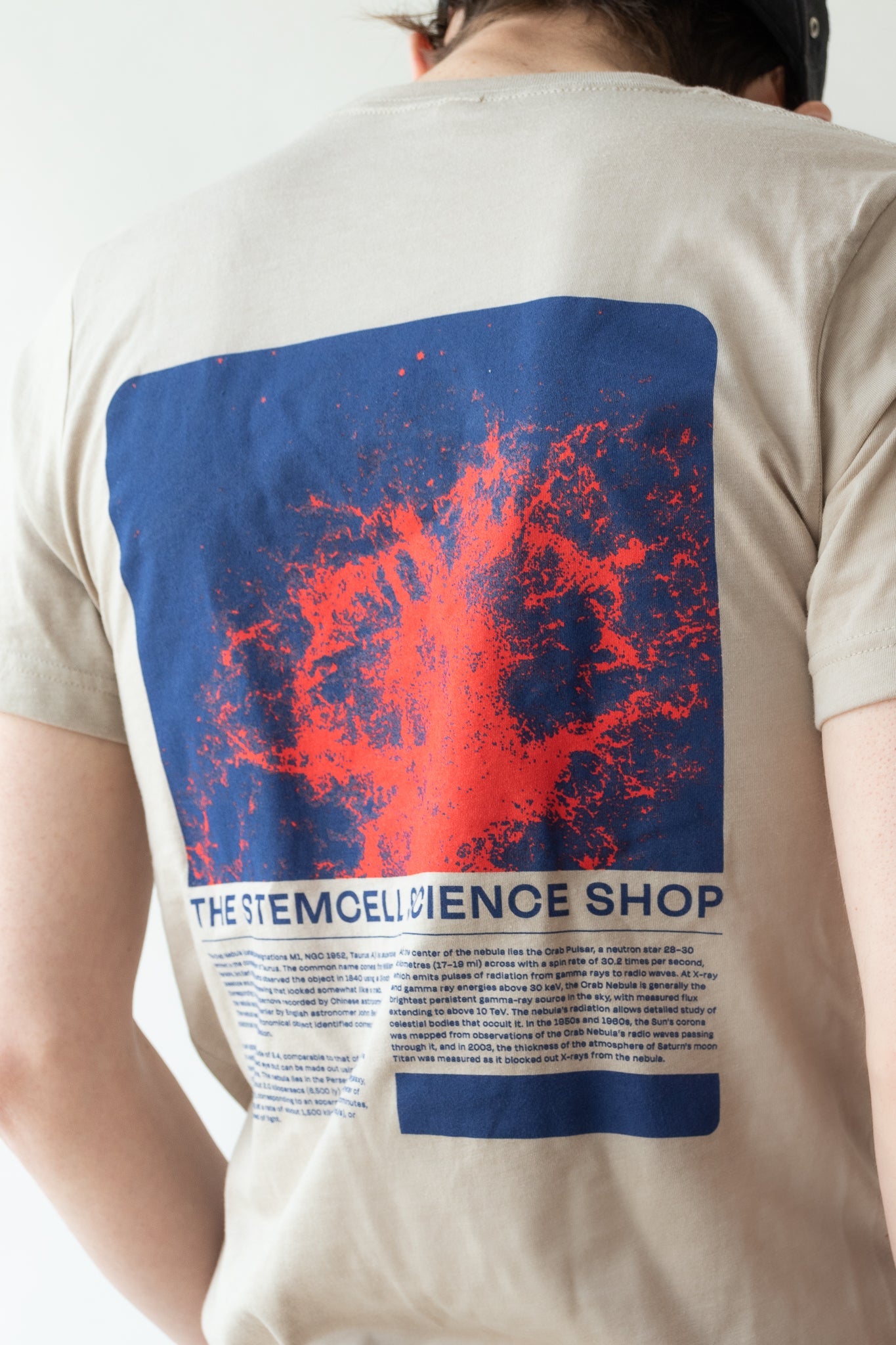


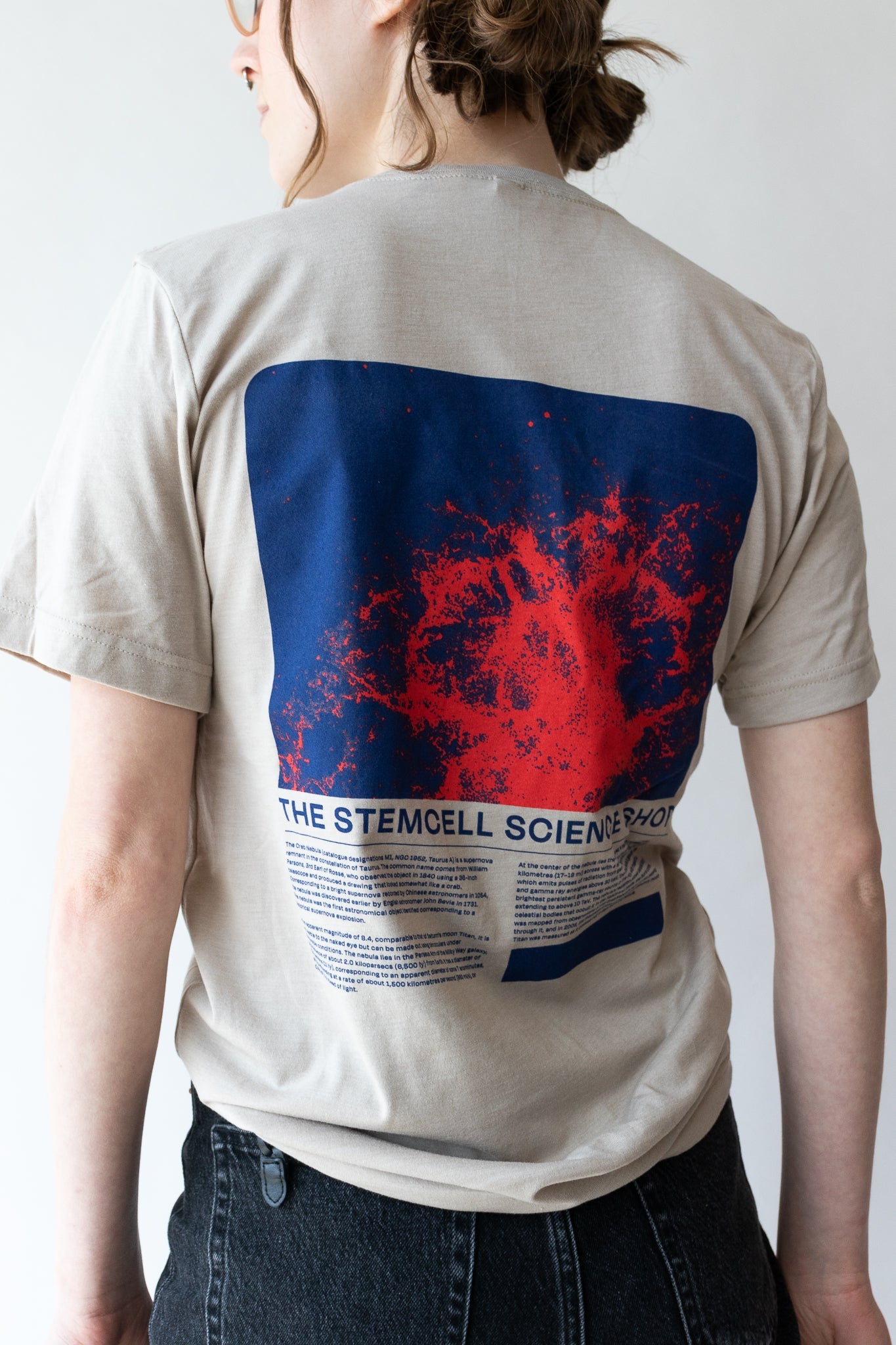

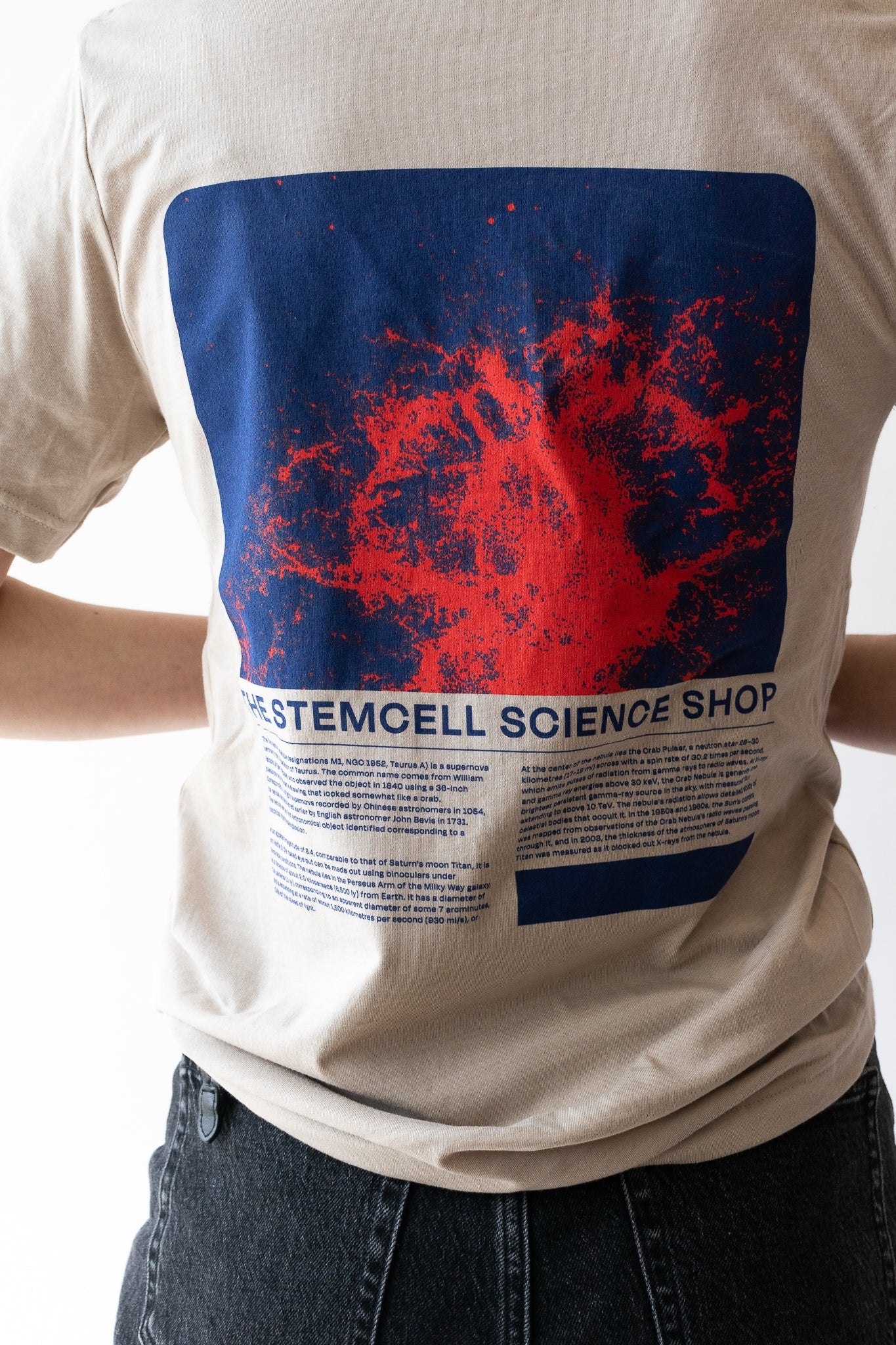
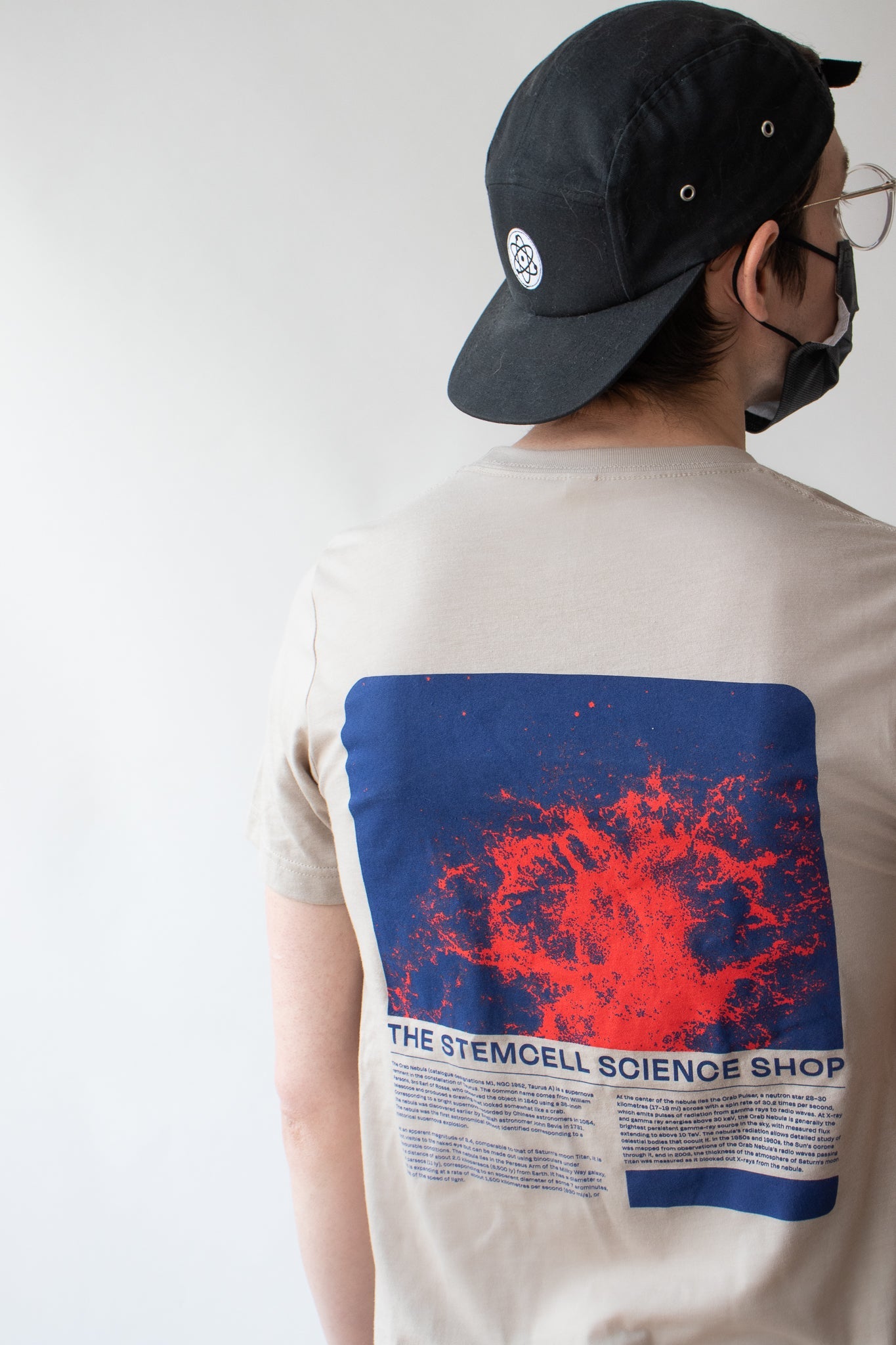
Shop collections containing this item:
Apparel In Stock Items ≤ $20 Newest Listings Outer Space Sale Items Shirts Stemcell Catalog Stemcell Merch Storewide
Collapsible content
Further Reading:
Super comfortable, and awesome design.
AUTHENTICITY GUARANTEED
We only list 100% verified authentic items. We work with reputable collectors, and regularly consult with our network of scientists and experts.
-
Free Shipping
Spend $50 to qualify for free US shipping
Spend $200 to qualify for free global shipping -
Secure Payments
Pay how you like: Credit card, PayPal, After Pay, Shop Pay, Venmo, Apple/Google/Meta Pay & crypto
-
Simple Returns
Change your mind? No problem. Enjoy easy returns within 30 days.
WE TAKE SCIENCE SERIOUSLY
You deserve better than craft store science products. And we think learning is more impactful when you're holding a tangible piece of what you're learning about. That's why Stemcell exists.
We're dedicated to providing the best scientific products available—whether they're fragments of scientific importance, experimental activities, or just interesting things that scratch your curiosity itch.
With every new product launch, our list of new ideas gets longer rather than shorter. So check in often for our latest projects, and thanks for being a part of our endeavor to make the world a smarter place to live.
Believe in yourself; for everything else, there's science.
— TERRY MUDGE, FOUNDER & SCIENTIFIC DIRECTOR
PS. Many of our rare items sell out in minutes. Join my email list and I'll send you early notice and access to our new items as soon as they're listed.










